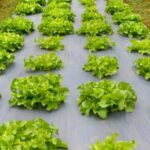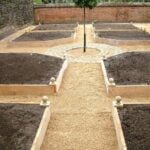For Canadian gardeners, understanding gardening zones is crucial for successful vegetable cultivation. Knowing which vegetables are suitable for your specific gardening zone can make a significant difference in the overall yield and health of your crops. This article will provide valuable insights into the various gardening zones in Canada and how to best select, plant, and care for vegetables based on these zones.
Canada’s diverse climate and geographical features result in a wide range of gardening zones, each with its own unique characteristics and challenges. From the frosty northern regions to the mild coastal areas, gardeners must consider their specific zone when planning and tending to their vegetable gardens. Whether you reside in Zone 2 or Zone 8, there are plenty of cold-hardy vegetable options available to ensure a successful harvest.
In addition to discussing suitable vegetables for various gardening zones, this article will also delve into essential practices such as soil preparation, planting techniques, seasonal extension strategies, weather protection methods, and tips for maximizing your vegetable bounty. By understanding these aspects of vegetable gardening within Canadian gardening zones, you can enhance your chances of a fruitful harvest while enjoying the satisfaction of growing your own fresh produce.
Choosing the Right Vegetables for Your Gardening Zone
Now that you understand the gardening zones in Canada, it’s important to choose the right vegetables for your specific zone. Different vegetables thrive in different climates and soil conditions, so it’s essential to select varieties that are well-suited to your gardening zone. In Canada, there are a wide range of gardening zones, from the milder zones in the south to the more challenging colder zones in the north.
When choosing vegetables for your gardening zone, consider factors such as temperature, sunlight, and frost dates. For example, if you live in a cooler northern zone, opt for cold-hardy vegetables like carrots, potatoes, and kale. On the other hand, if you have a longer growing season in southern Canada, you may have more options for warm-weather crops like tomatoes, peppers, and zucchini.
It’s also important to consider the length of your growing season when choosing vegetables for your gardening zone. In short-season zones, look for quick-maturing varieties of vegetables like radishes and lettuce that can be harvested early. Additionally, some Canadian gardeners may use season-extending techniques such as row covers or cold frames to maximize their growing season and expand their vegetable options.
| Vegetable | Recommended Gardening Zones |
|---|---|
| Carrots | Zones 1-5 |
| Tomatoes | Zones 6-9 |
| Kale | Zones 1-7 |
| Radishes | Zones 1-4 |
Preparing the Soil for Vegetable Gardening
Understanding Your Soil Type
Before you start planting your vegetables, it’s important to understand the type of soil you have in your gardening zone. Canadian gardening zones have a variety of soil types, from clay and loam to sandy soils. Testing your soil will help you determine its pH level and nutrient content, allowing you to make necessary amendments to improve its quality for vegetable gardening.
Amending the Soil
Once you know your soil type, you can begin making necessary amendments for optimal vegetable growth. Adding organic matter such as compost or well-rotted manure can improve soil structure and fertility. You may also need to adjust the pH level by adding lime for acidic soils or sulfur for alkaline soils. Additionally, incorporating a balanced fertilizer can provide essential nutrients for your vegetables throughout the growing season.
Creating Raised Beds or Containers
In areas with less than ideal soil conditions, creating raised beds or using containers for vegetable gardening can be an effective solution. This allows you to have more control over the quality of the soil used, ensuring that it is well-drained and rich in nutrients. Raised beds also warm up faster in spring, extending the growing season for cold-hardy vegetables in shorter-season gardening zones in Canada.
By preparing the soil properly for vegetable gardening in Canadian gardening zones, you can create an optimal environment for your plants to thrive and produce a bountiful harvest. Understanding your specific gardening zone and soil type will allow you to make informed decisions when it comes to amending the soil and choosing the right vegetables for successful growth.
Planting and Caring for Cold-Hardy Vegetables
When it comes to vegetable gardening in Canada, especially in cooler gardening zones, it’s important to choose vegetables that are cold-hardy and can withstand the lower temperatures. Here are some popular options for cold-hardy vegetables that you can consider planting in your garden:
- Kale: This leafy green is not only incredibly nutritious but also thrives in cooler temperatures. It can withstand light frosts, making it a great option for Canadian gardening zones.
- Carrots: These root vegetables are well-suited for cooler climates and can be left in the ground even after the first frost, as they become sweeter with colder temperatures.
- Brussels sprouts: These mini cabbages are perfect for Canadian gardening zones and actually taste better when grown in cooler weather.
Once you have chosen the right vegetables for your gardening zone, it’s important to prepare the soil properly. Cold-hardy vegetables thrive in well-drained soil that is rich in organic matter. Ensure that the soil is loose and free of any debris before planting your chosen vegetables.
After planting your cold-hardy vegetables, it’s essential to provide them with proper care throughout the growing season. Regular watering, especially during dry spells, is crucial to ensure healthy plant growth. Additionally, using mulch can help regulate soil temperature and retain moisture, which is particularly important during colder weather.
By choosing the right cold-hardy vegetables for your gardening zone and providing them with proper care, you can enjoy a bountiful harvest of fresh produce despite the challenges of Canadian gardening zones.
Maximizing Your Growing Season in Short-Season Gardening Zones
When it comes to gardening in Canada, especially in short-season gardening zones, maximizing your growing season is essential. With a shorter frost-free period, gardeners in these zones need to be strategic about the types of vegetables they choose to grow and how they care for them.
One way to extend the growing season in short-season gardening zones is by starting seeds indoors. This allows you to get a head start on the growing season and transplant seedlings into the garden once the risk of frost has passed. Some vegetables that are well-suited for this approach include tomatoes, peppers, and eggplants. By giving these warm-season vegetables a head start indoors, you can ensure a better harvest in short-season zones.
Another strategy for maximizing your growing season in short-season gardening zones is to make use of season extenders such as cold frames, row covers, and cloches. These tools help protect plants from cold temperatures and extend the growing season into the fall. For example, by using a cold frame, you can grow cool-weather crops like lettuce and spinach well into the winter months.
It’s also important to plan your planting schedule carefully in short-season gardening zones. Choose quick-maturing vegetable varieties and succession plant to make the most of your limited growing season. By staggering your plantings, you can ensure a continuous harvest throughout the summer and into the early fall before the first frost hits.
| Vegetable | Days to Maturity |
|---|---|
| Radishes | 20-30 days |
| Lettuce | 45-55 days |
| Zucchini | 45-55 days |
Protecting Your Vegetables From Extreme Weather Conditions
Extreme weather conditions can pose a threat to your vegetable garden, especially in Canadian gardening zones. However, with the right precautions and care, you can protect your vegetables from these challenges. Here are some tips for protecting your vegetables from extreme weather conditions:
- Install row covers or cold frames: These can provide protection from frost, strong winds, and heavy rainfall. Row covers also help to retain heat and keep insects at bay.
- Use mulch: Mulching your vegetable garden helps to regulate soil temperature, retain moisture, and protect the roots of your plants. Organic mulch such as straw or wood chips is particularly effective.
- Provide shade: During hot summer days, providing shade for your vegetables can prevent sun scald and wilting. Use shade cloth or strategically plant taller crops to provide natural shade.
In addition to these measures, it’s important to stay informed about weather patterns in your gardening zone. Be prepared to take action if extreme weather events are forecasted by covering delicate plants or moving containers inside if necessary.
By taking these precautions and staying vigilant about weather conditions, you can minimize the impact of extreme weather on your vegetable garden in Canadian gardening zones. This will help ensure a successful growing season and a bountiful harvest of fresh, delicious produce.
Remember that each gardening zone will have its unique challenges when it comes to extreme weather conditions, so be sure to research specific strategies for your particular area.
Tips for Successful Vegetable Gardening in Canadian Gardening Zones
Successfully growing vegetables in Canadian gardening zones requires careful planning, proper care, and attention to the unique climate and environmental conditions of each zone. Here are some tips for ensuring a successful vegetable garden in Canada.
Choose the Right Vegetables
Selecting the right vegetables for your specific gardening zone is crucial for a successful harvest. Be sure to choose cold-hardy varieties that can withstand the cooler temperatures and shorter growing seasons commonly found in many Canadian gardening zones. Some recommended vegetables for Canadian gardeners include carrots, beets, kale, Swiss chard, and various types of lettuce.
Season Extension Techniques
To maximize your growing season in short-season gardening zones, consider using season extension techniques such as row covers, cold frames, or hoop houses. These methods can help protect your vegetables from frost and allow you to start planting earlier in the spring and extend your harvest into the fall.
Proper Watering and Mulching
In Canadian gardening zones with fluctuating temperature and moisture levels, it’s important to pay close attention to watering needs. Mulching around vegetable plants can help retain soil moisture, regulate soil temperature, suppress weeds, and protect plant roots from extreme temperature fluctuations.
By following these tips and implementing best practices for vegetable gardening in Canadian gardening zones, you can increase your chances of a successful harvest of delicious and nutritious homegrown vegetables. Remember to take into consideration the unique characteristics of your specific gardening zone when planning and caring for your vegetable garden.
Harvesting and Preserving Your Vegetable Bounty in Canada
In conclusion, gardening in Canada can be a rewarding experience, especially when it comes to growing fresh and delicious vegetables. By understanding the gardening zones in Canada and choosing the right vegetables for your specific zone, you can set yourself up for success. It’s important to take the time to prepare the soil properly and plant cold-hardy vegetables that can withstand the sometimes harsh Canadian climate.
For those in short-season gardening zones, it’s essential to maximize your growing season by starting seeds indoors and using techniques such as coverings and containers to extend the growing period. Additionally, protecting your vegetables from extreme weather conditions, such as frost and heavy rainfall, will help ensure a successful harvest.
When it comes time to harvest your vegetable bounty, consider preserving the excess produce through methods such as canning, freezing, or pickling. This allows you to enjoy your homegrown vegetables long after the growing season has ended. With these tips and techniques, you can enjoy a successful vegetable garden no matter which gardening zone you’re in across Canada.
Frequently Asked Questions
What Are the Gardening Zones in Canada?
The gardening zones in Canada are divided into different regions based on climate and temperature. These zones, also known as hardiness zones, help gardeners determine which plants are suitable for their specific area.
Are US and Canadian Hardiness Zones the Same?
No, the US and Canadian hardiness zones are not exactly the same. While they both use a similar system to categorize climate and temperature, there are differences in the specific range of temperatures each zone represents.
What Plants Are in Zone 4 in Canada?
Zone 4 in Canada includes a variety of plants that can tolerate cold temperatures and shorter growing seasons. Some examples of plants that thrive in this zone include lilacs, potentilla, and certain varieties of roses.

If you’re looking to get into vegetable gardening, or are just looking for some tips on how to make your current garden better, then you’ve come to the right place! My name is Ethel and I have been gardening for years. In this blog, I’m going to share with you some of my best tips on how to create a successful vegetable garden.





